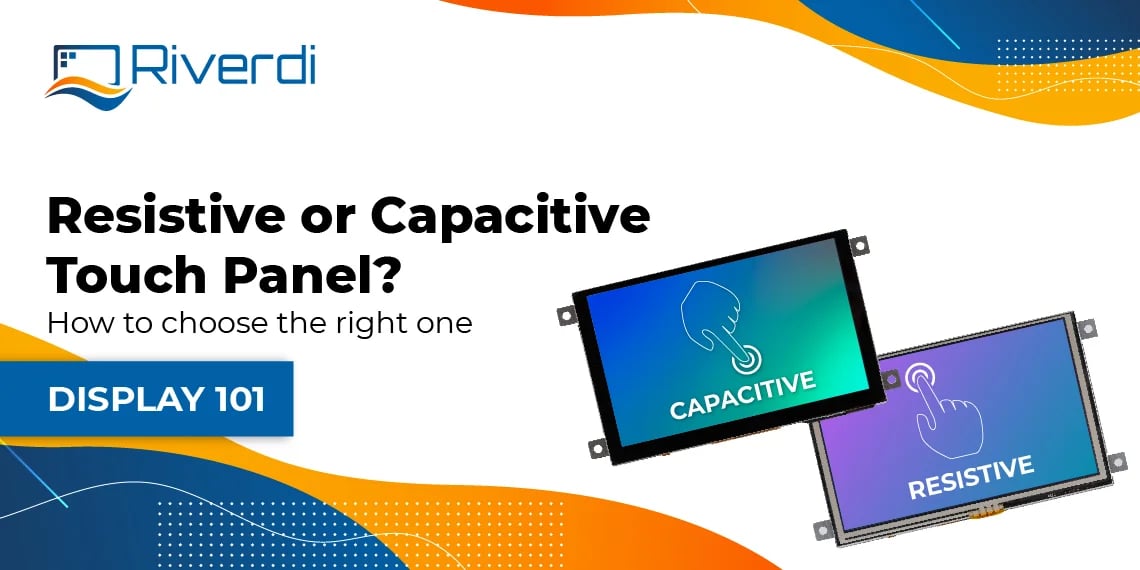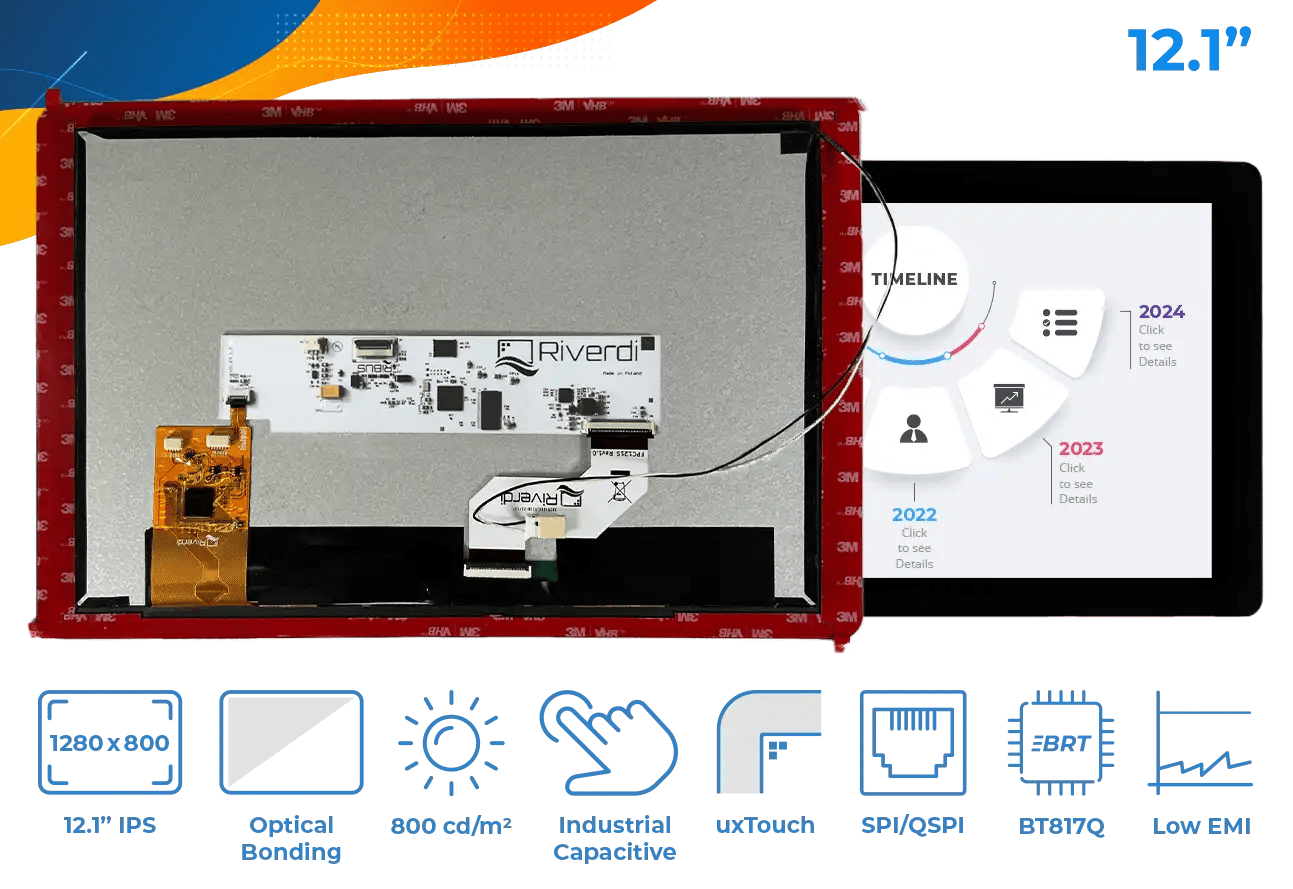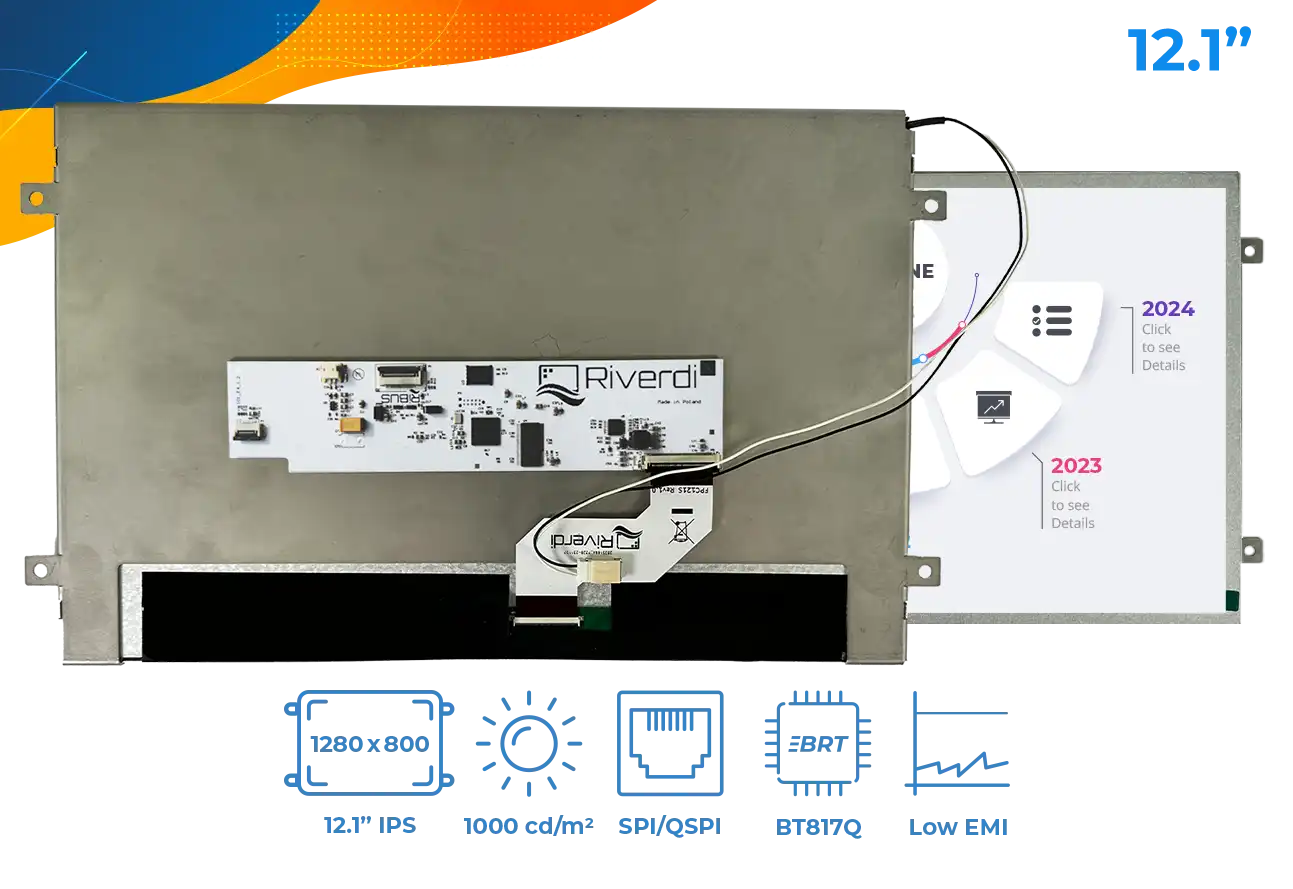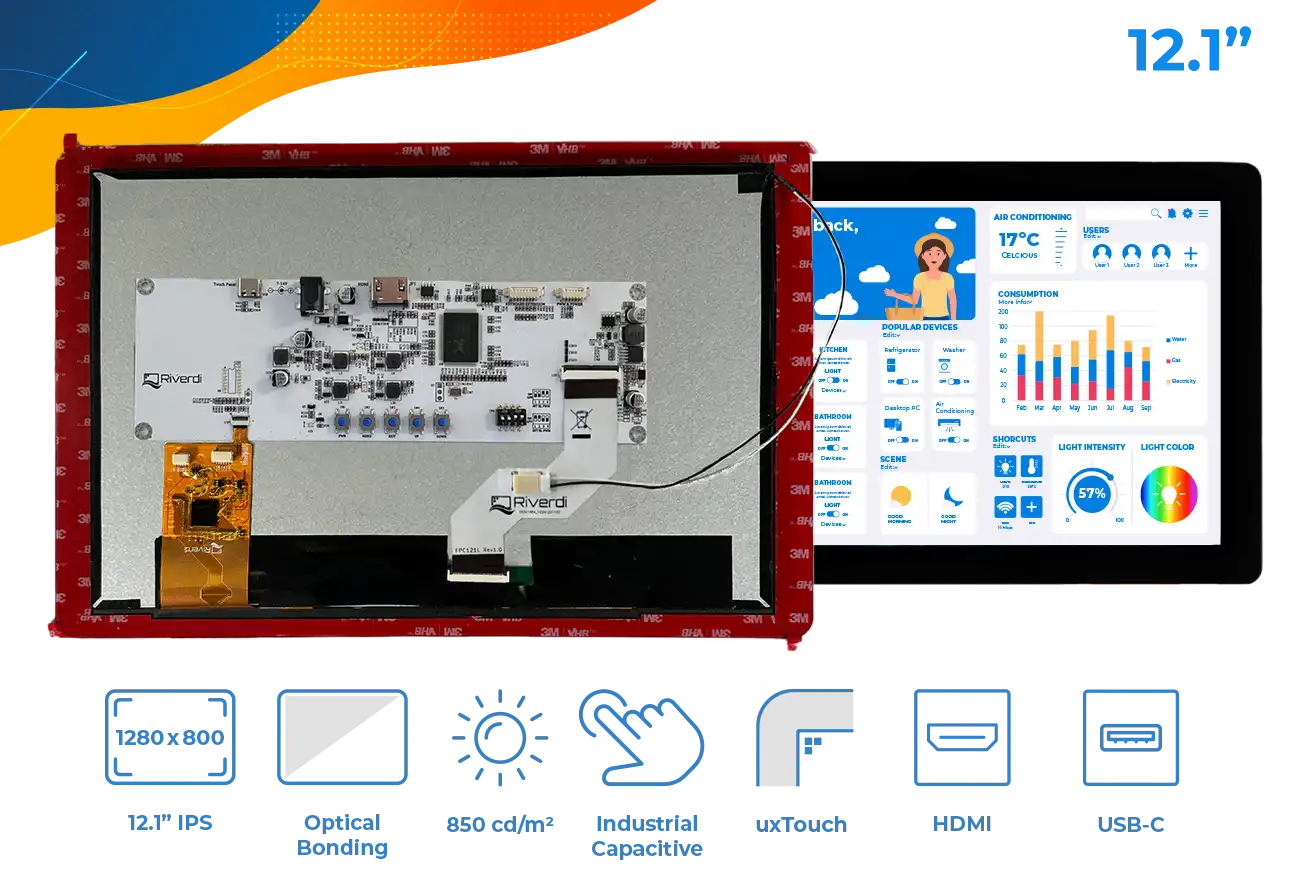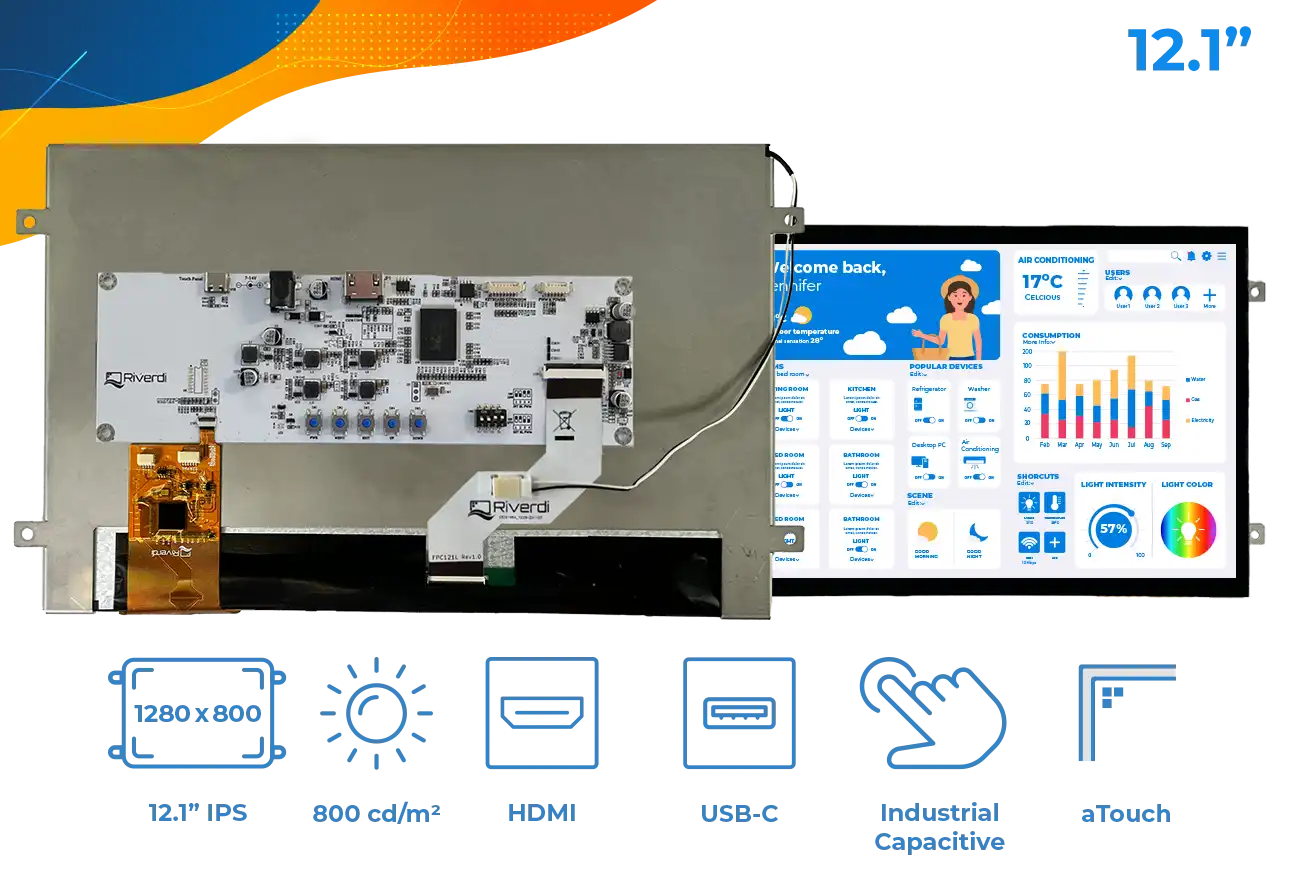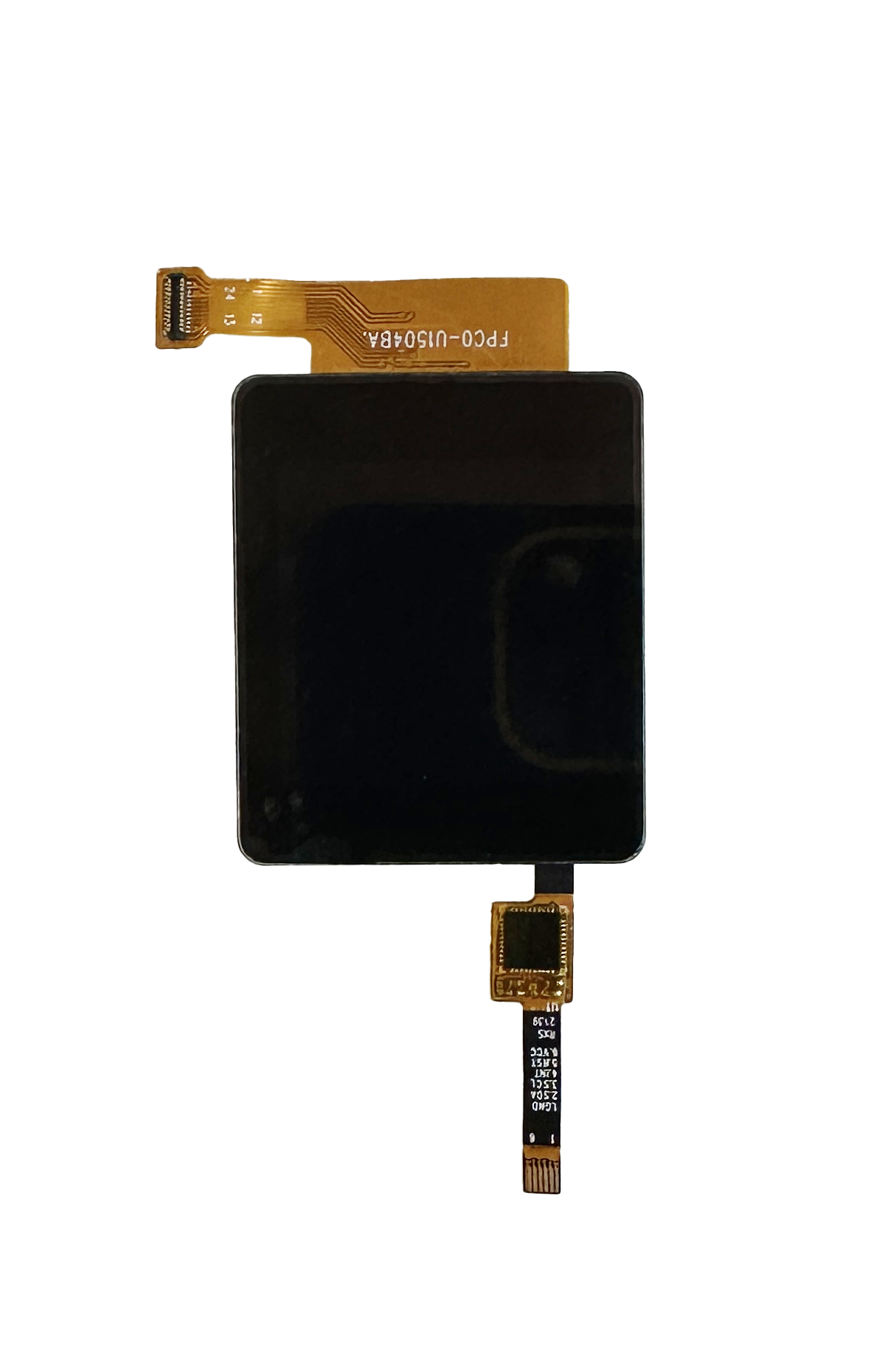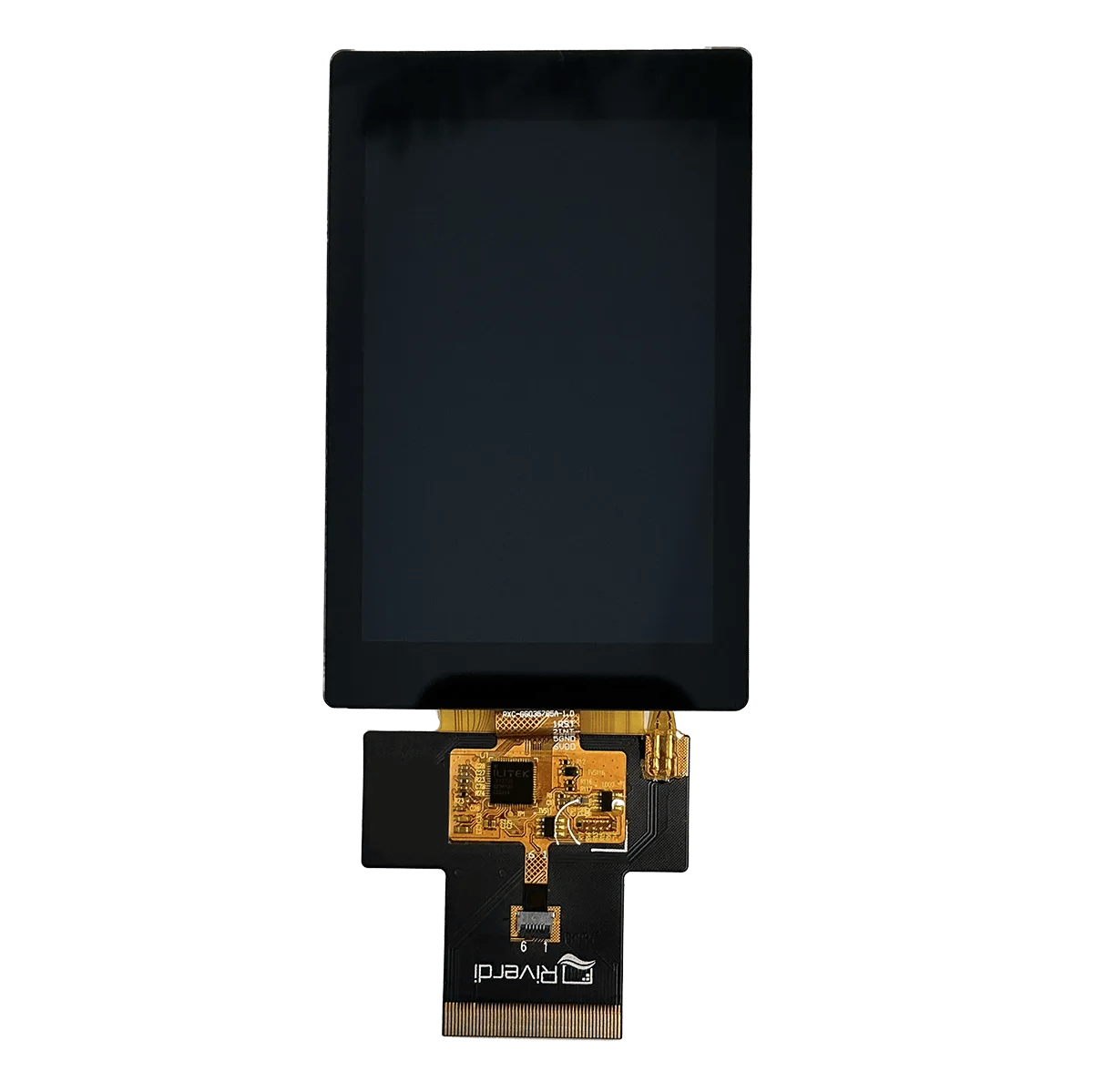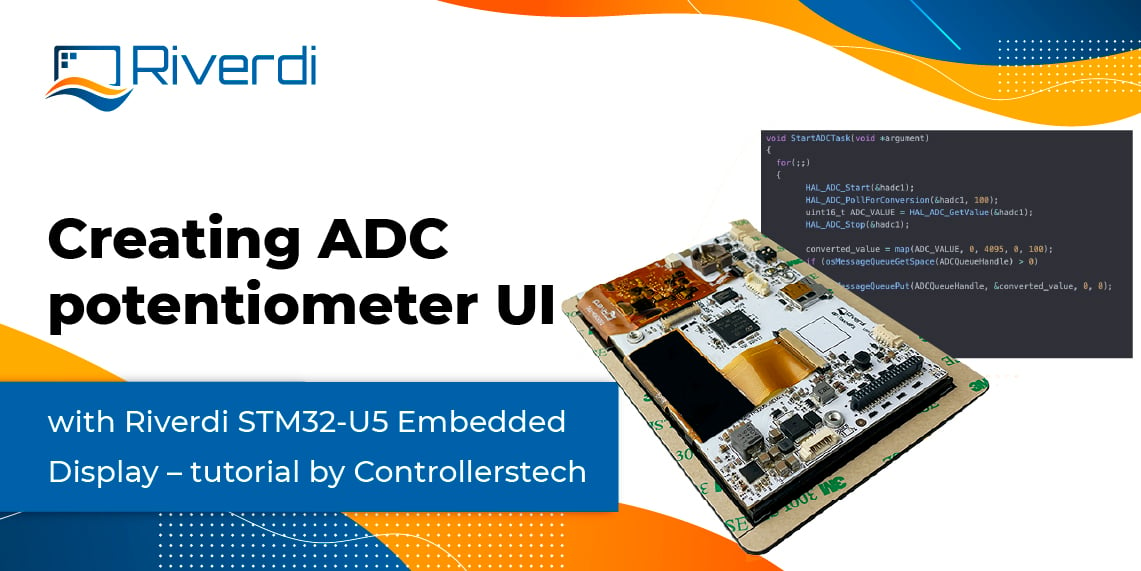We all use touchscreens every day. Touch panels are so common, that we don’t notice them anymore. Think about all the times when you use touch panels: typing out a text message, getting cash from an ATM, and adjusting the temperature in the office.
You might be aware of the differences between particular touch panel modules. Touch panels vary in response time, required pressure or different texture under your fingers.
Each type of touch panel responds differently because of the underlying technology.
You want to choose the best type of touchscreen for the project you’re working on? Try to decide based on what environment and what circumstances the display will be used in.
The three main touch screen components are:
- Touch sensor
- Controller
- Software driver
Our shop gives you two versions to choose from: capacitive and resistive touch panels.
The resistive touch panel
Let’s start with resistive touch panels.
The history of resistive touch panels starts in the 1970s. For years, that was the most common touch input technology. But it wasn’t just the number of years the resistive touch panels had over capacitive ones. Resistive touch panel technology is cheaper than the capacitive touch screen components.
According to the technology name, the resistance measurement is what detects the touch. The pressure on the screen of the touch panel translates directly to change in the Ohm value.
A resistive touch panel has several layers:
The conductive layers of ITO or Indium Tin Oxide (see the image above) are separated by spacer dots. That prevents them from touching one another while the touch panel is not in use. What happens when a finger touches the touch panel? This space between spacer dots disappears and the layers detect the resistance change. Then the coordinates of the touch are being calculated.
The main advantages of resistive touch panels are:
- Lower price
- You can use them with a gloved hand or a stylus
- Better for rugged environments
Resistive touch panel disadvantages:
- They do not respond to multi-touch
- Not as sensitive to a light touch
- Scrolling can be difficult, as the surface is not as smooth as on capacitive screens
The capacitive touch panel
Capacitive touch panel technology relies on the capacitance of the human body. Meanwhile, the resistive technology depends on pressure applied on the touch panel., and not on pressure like resistive technology. There are two types of capacitive touch panels – surface capacitive and projected capacitive.
Both touch panels work on detecting the change of capacitance on the screen.
Surface capacitive
Capacitive touch panels are more often used for big surfaces, as they need less accuracy.
Let’s see take a look at how capacitive touch screen components work.
As you probably may already know, a thin glass surface covers capacitive touch screens. Under this glass surface, covered with a protective layer, lies a thin layer of electrodes. The electrodes on the corner of the touch panel provide the voltage for the thin film layer. As your finger touches the screen a small electrical charge is transferred to the finger and the electrical circuit is complete. This creates a voltage drop on that part of the screen, and the touch is being detected.
Projected capacitive
The projected capacitive touch panel is a more complex capacitive technology. Beneath the glass with the protective cover (mentioned above), there is a pattern of electrode layers – called the matrix. This pattern forms the plane of X and Y coordinates, which the controller uses to calculate the touch event.
This variant of touch panels is used for smaller dimensions, as it’s more accurate than surface capacitance.
This is why you can’t use a capacitive touch screen when you’re wearing gloves.

Capacitive technology advantages are:
- Excellent sensitivity
- Multi-touch capability
- Very good durability with glass front designs
The disadvantages are:
- The size of the screen limits the accuracy of the sensitivity
- The price is higher than for resistive panels
- It can’t be used with gloved hands or a stylus (those require a more sophisticated driver)
Conclusion
So, next time you’re starting a project and you don’t know what type of touch screen components you should choose, check out this article. Think about what kind of environment the touch panel will be in. If you are planning to use this device in a more rugged, industrial setting, a resistive touch panels will work better. It’s because you can use this touch panel with both gloved hands and a stylus.
But if you design the device for a more sophisticated application, then a capacitive touch panel is our recommendation. With capacitive touch panels multi-touch is not a problem, you can easily scroll and have excellent sensitivity.

